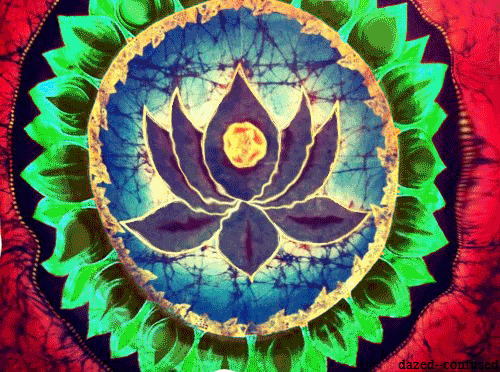None of my parts solely define me, and I, myself am unclassifiable.
Often, Yukio Mishima, the acclaimed laureate, is associated with the infamous Mishima incident—during which, in an attempt to revive Japanese patriotism, he and three cohorts carried out seppuku (ritual suicide by disembowlment) after a failed coup d’etat. However extremist and grisly his final actions were, Mishima’s literary grace belies the fanatical notoriety with which he left us.
In his short story The Priest and his Love, Yukio Mishima, in his riveting, lilting style proposes that our universe can be represented by a single, though enormous, lotus flower:
“By means of microscopic observation and astronomical projection the lotus flower can become the foundation for an entire theory of the universe and an agent whereby we may perceive the Truth. And first we must know that each of the petals has eighty-four thousand veins and that each vein gives off eighty-four thousand lights. Furthermore, the smallest of these flowers has a diameter of two hundred and fifty yojana. Thus, assuming that the yojana of which we read in the Holy Writings correspond to seventy-five miles each, we may conclude that a lotus flower with a diameter of nineteen thousand miles is on the small side.
Now such a flower has eighty-four thousand petals and between each of the petals there are one million jewels, each emitting one thousand lights. Above the beautifully adorned calyx of the flower rise four bejeweled pillars and each of these pillars is one hundred billion times as great as Mount Sumeru, which towers in the center of the Buddhist universe. From the pillars hang great draperies and each drapery is adorned with fifty thousand million jewels, and each jewel emits eighty-four thousand lights, and each light is composed of eighty-four thousand different golden colors, and each of these golden colors in its turn is variously transmogrified.”
Now, take that magnificent, vivid explosion of detail, color, light and texture blossoming in your mind, and use it as analogy to understand the intricacies and riddles that lie within you.
This infinite myriad of veins, petals, pillars and hues represents the puzzling labyrinth of our inscrutable selves.
The subtlety of our nature, the dichotomy of our desire, the contradictions in our past, the wistful aspirations of our soul, and the dynamism of our curiosity, are all manifested in equally diverse behaviors and emotions.
From the reactions that dismay us, the unbridled joy that beams from our heart, the green beast that rises through our core, the abating patience that bewilders us, the acute urges that stifle our will, the waves of gratitude that burst through in the most random, mundane moments, the guilt that shames us into corners, the fear that shrinks us into obscurity, the weary trepidation that confuses us, the love that makes our souls radiate with light, the empathy that makes our stomach wallow and sway and to the contentment that makes us want to just stay still for a minute or a million and rest our bones.
Perhaps I’m applying Mishima’s analogy differently than he ever intended, and maybe it’s a stretch, but only in acknowledging the paradoxes we hold within ourselves can we hope to perceive our truth.
Mishima’s enigmatic nature is a poignant example of the mysteries of human character. Flowing, calming, hypnotic three-page lyrical portrayals of kimono fabric stand in stark contrast to the gruesome acts that preceded his death by self-inflicted disembowelment.
I, like you—and like Mishima—am a tangled and spirited being who naturally experiences contradictory feelings to those that I value.
There are parts that I’m ashamed of, and many more that I’m proud of. They make up my whole, and they present themselves at random times on different days in various ways. Sometimes when I want them to, and other times when I pray they leave me the hell alone. But when they do peek out, I’m comforted knowing that they come from a place that I know and own.
And again, like Mishima, none of my parts solely define me, and I, myself am unclassifiable. What I am now, I may not be tomorrow. Not to say I’ve got it all figured out. But when I wake up in the morning, in those few seconds during which I recall who I am, what I do and what I feel from a blurred fog—I smile with my heart, and step in to my day with patience for my flawed and convoluted self.
Love elephant and want to go steady?
Sign up for our (curated) daily and weekly newsletters!
Editor: Bryonie Wise
Photo: courtesy of the author/Eikoh Hosoe







Read 0 comments and reply